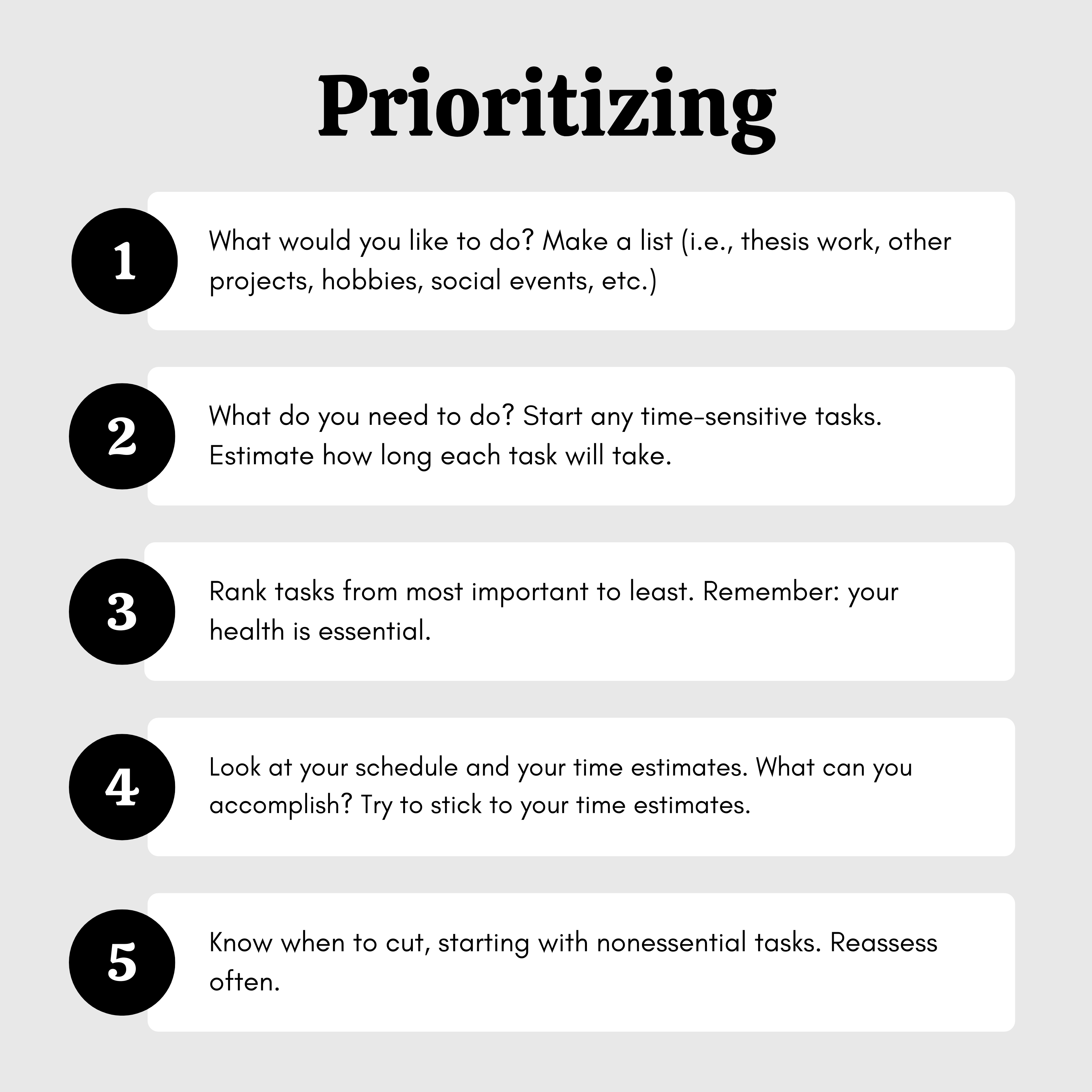8 Time Management: Accomplishing Difficult Tasks and Maintaining Momentum
How to prioritize your time
Use these suggestions to help you determine how to organize your time and prioritize the tasks you need to complete.

Accomplishing difficult things
There are two schools of thought on how best to approach difficult or daunting tasks:
- Eat your frogs first. Start your day with the item on your task list that you are dreading the most. Get it out of the way so your mind is clear to focus on other, more enjoyable (or less intimidating) tasks.
- Build momentum. Begin with easy/fun tasks, or begin with a task you have left half-finished from the previous day. This will get you into working mode and help you feel positive about the day’s outlook. Once you have a more enjoyable task or two completed, move on to the more difficult/involved tasks.
Consider experimenting with both – which method works best for you?
“Challenge: A challenge I faced was staying on task while setting my own deadlines and staying motivated to complete the work, given the magnitude of the task.
Tip: Thesis writing is a marathon and not a sprint – take it day by day and break down larger tasks into smaller, more manageable chunks. Reward yourself along the way as you complete each step and meet each deadline and create times and places for work and times and places for other important life things.”
Sociology PhD Graduate
Tips for maintaining momentum over time
- End every work session with a short description of what you’ll work on in the next session. This way, even if there are extended periods of time between working on a particular project, you will have a reminder of where to start and be able to get back into “the zone” easier.
- Form a support group, or what Blair calls a “Community of Practice” – a group of students in your department and elsewhere who are at a similar stage in the thesis process.[1] This community can help you stay motivated, provide suggestions and feedback when you are stuck, and help shift your perspective. The “Staying Well While Writing” section of this toolkit has more suggestions for how to build an academic community.
- Work smarter, not more. Try the Pomodoro Technique to work intensively with frequent breaks.[2]

“Writing such a long document is a daunting task which provides plenty of fuel for procrastination. Moreover, organizing such a long document, such that it tells a coherent and compelling story, is a herculean task. To deal with the time management aspect, I used the Pomodoro Technique, which worked quite well for me. Typically, this consists of 25 minute intervals of focused work followed by a 5 minute break. Often, I would prolong the 25 minute session to 50 minutes and take a 10 minute break instead if I felt in the flow of writing; however, I never worked for more than 2 hours at a time and made sure to take a longer break (at least 30 minutes) every 2 hours.”
Chemistry, 2019
- Lorrie Blair, “What Is a Thesis?,” in Writing a Graduate Thesis or Dissertation, ed. Lorrie Blair, Teaching Writing (Rotterdam: SensePublishers, 2016), 1–6, https://doi.org/10.1007/978-94-6300-426-8_1. ↵
- Francesco Cirillo, The Pomodoro Technique (New York: Currency, 2018). ↵

